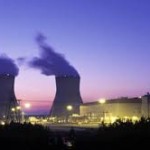Natural gas swung between gains and losses on Friday on expectations for moderating temperatures in the short-term, followed by the return of colder-than-usual weather in key U.S. consuming areas early next week, stoking demand for the power-station fuel.
On the New York Mercantile Exchange, natural gas for delivery in December traded at $3.603 per million British thermal units at 13:09 GMT. Prices shifted in a range between days high of $3.621 per mBtu, and session low of $3.576. The power-plant fuel rose by 1.6% on Thursday but trimmed its weekly decline to little below 1.4% on Friday.
Futures fluctuated on expectations for warming temperatures over the Midwest and Northeast in the next few days, according to www.natgasweather.com. However, the moderating readings are expected to give way to a cold outbreak early next week. MDA Weather Services in Gaithersburg, Maryland, reported that temperatures from the East Coast through the Midwest will be below-average between November 19 and November 28, causing Americans to crank up heating. According to AccuWeather Inc., temperatures in New York on November 27 may bottom at 27 degrees Fahrenheit, 11 below usual, while the low in Chicago and Boston may be 17 and 23 degrees Fahrenheit respectively, 12 below usual for both cities.
When cold weather is expected, natural gas surges as increased electricity demand to power air-conditioning calls for more supply of the fuel, which is used for a quarter of U.S. electricity generation. Consumption usually picks up from November through March. According to the Energy Information Administration, power generation accounts for 32% of U.S. gas demand and 49% of U.S. households use the energy source for heating.
According to a Bloomberg survey of analysts, the below-average temperatures predicted for next week are expected to drive prices up. According to eight of 11 participants polled, or 73%, futures will gain through November 22, while two, or 18%, were bearish and one expected no significant change in prices.
The energy source also drew support after the Energy Information Administration reported yesterday that U.S. natural gas inventories rose less than projected last week, although the gain was still above the average. Stockpiles added 20 billion cubic feet in the week ended November 11, above the five-year average build of 19 billion and last year’s 12 billion increase during the comparable week. Inventories were expected to surge by 22 billion cubic feet according to the median estimate of 18 analysts surveyed by Bloomberg.
Total gas held in underground U.S. storage hubs equaled 3.834 trillion cubic feet, 2% below last year’s 3.914 trillion during the comparable period. The surplus over the five-year average total amount of gas remained unchanged at 1.5%.
Natural gas however was pressured after the government agency said in a report yesterday that U.S. output may jump to 70.29 billion cubic feet per day in 2013, 0.4% above the previous month’s estimate of 70 billion. If confirmed, current year’s production will be 1.6% above 2012′s record high of 69.18 billion cubic feet per day.
The steadily increasing U.S. output has risen to record high levels in the past months as technologies such as fracking provided a cheaper way to drill into shale rock and extract fuel. The EIA said the Marcellus shale has been the main driver of growth.





